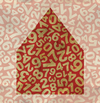Pyspread – The Spreadsheet with a Python connection
|
Since the early days of electronic data processing, the spreadsheet application has been a standard tool for everyday office life. The focus of this article, Pyspread [1], is related directly to some of the larger, better-known representatives, such as Gnumeric, KSpread/Calligra Sheets, Calc from Libre- and OpenOffice, and PlanMaker from the commercial SoftMaker Office package.
Pyspread, however, has a unique selling point among this gaggle of competitors: It is uncluttered and manageable for beginners (Figure 1). It includes all the basic mechanisms required for table-based work and performing calculations. It also impresses with the fact that it uses an existing scripting language for formulas and evaluations within the data sheet instead of its own macro language. Pyspread thus follows a similar approach to Calc; however, it is based on the popular Python instead of Scheme.
Pyspread, which itself is written in Python, groups a wider choice of language constructs and notations with special importance to spreadsheets. This means that the interpreter can fully process calculation formulas within a reasonable time, and it visualizes the results as values or graphics.
[...]
Buy this article as PDF
Pages: 4
(incl. VAT)






